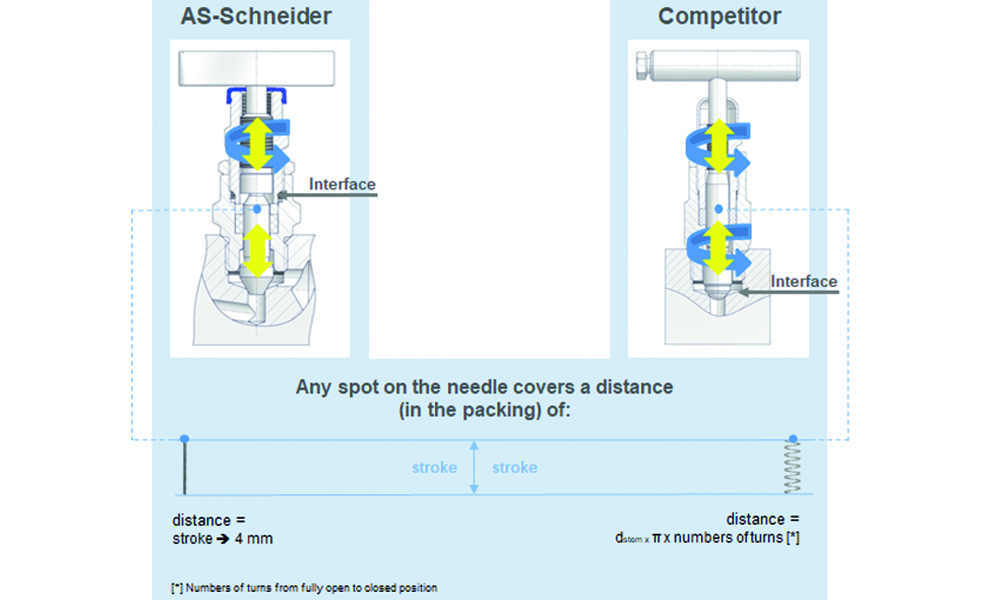Small, but powerful: Low torque for a smooth operation
During my last 12 years in the instrumentation business I have been asked many times at which pressure a manifold can still be operated. As well as, what is the difference between the following two non-rotating stem designs:

Let me explain the difference:
At the non-rotating stem design with interface above the packing, the needle is conducting an up-and-down movement only. When opening/closing the valve, any spot on the needle covers a distance of 4 mm.
At the non-rotating stem design with interface below the packing, the needle is covering a much longer distance (94 mm), if we are calculating with the same dimensions (stem Ø 7.5 mm x π x 4 mm stroke). This difference of 4 mm to 94 mm is resulting in a smooth operation. The short distance of 4 mm is resulting in a smooth operation and minimum wear of sealing elements and gives a long service life.
Why is it important to use a back seat?
Some manufactures are waiving the back seat, this is a safety issue! Using the back seat means releasing the packing stress. Without back seat the packing will be permanently under pressure if the valve is open (this does always apply to Equalizer Valves).
Using the back seat design, the packing is only under pressure during the few seconds the valve is operated (either closed or opened). This is tremendously increasing the lifespan of the packing itself. The Fugitive Emission rates are reduced to a minimum (metal to metal back seat).
In case of packing failure, there won`t be any leakage if the valve is closed against the back seat.

